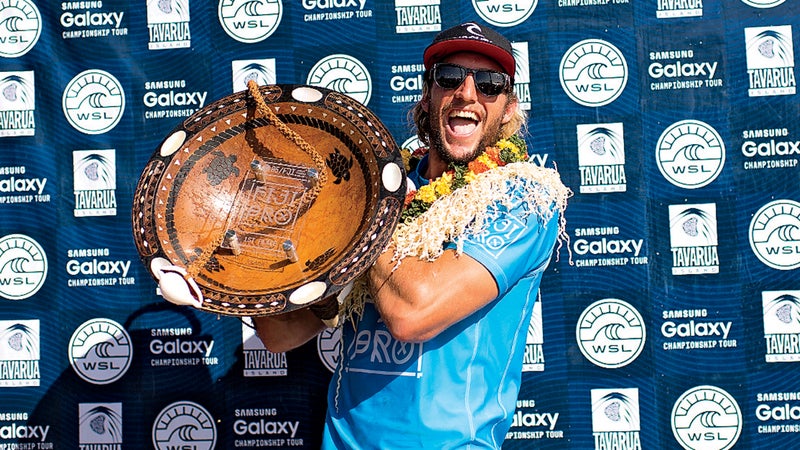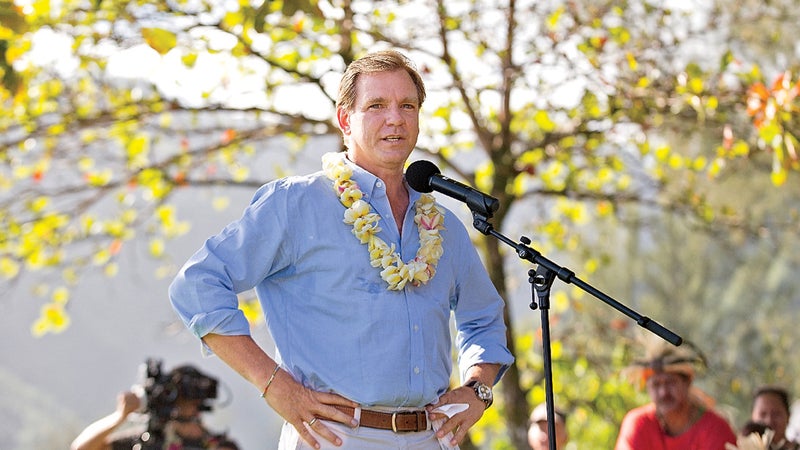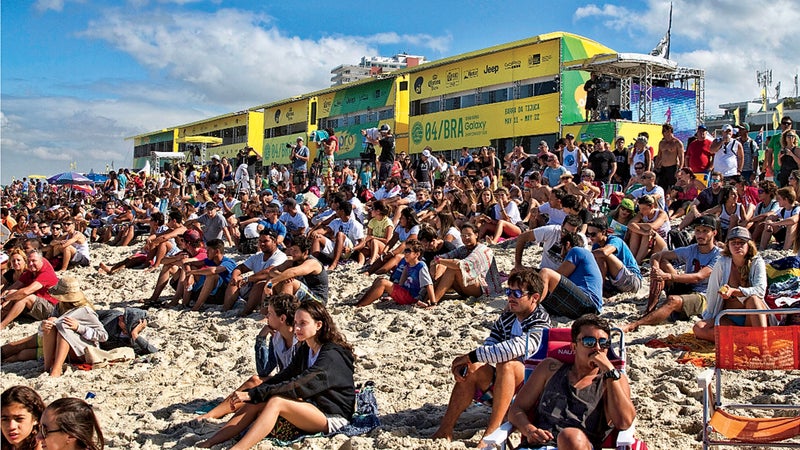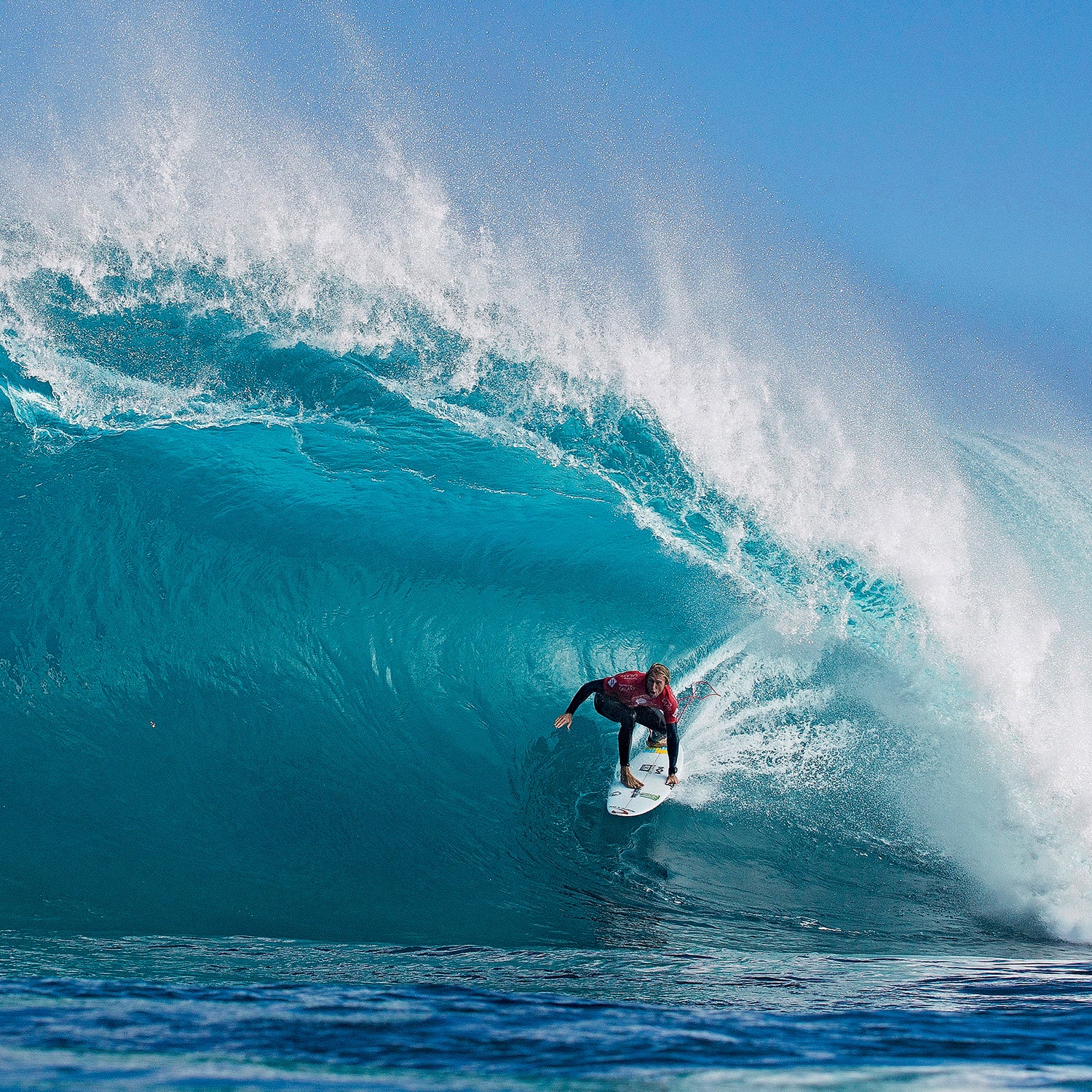This past April, I was at home eating dinner when I received a push notification from the World Surf League’s new . “It’s On!” the alert read. “It” referred to the in Western Australia—a competition held 14 time zones away from my home in New Mexico that I hadn’t even realized was happening. I launched the app just in time to catch Owen Wright, a lanky Australian, stroke into an eight-footer, grab his outside rail, and set a graceful line through an expanding barrel, emerging with one finger in the air.
It was a beautiful wave, but the bigger success for the newly branded WSL was that I was watching at all. The league’s new strategy is part of a bold attempt to become the surfing world’s first all-in-one digital media network.

The firm behind that strategy, , purchased what was then called the Association of Surfing Professionals in 2012. At the time, the ASP was in serious trouble. Each of its ten contests was operated by a different brand—Quiksilver ran the event in France, Billabong the one in Tahiti—and they all vied with one another for sponsors. The competitions were streamed live, but on numerous different websites, and announcers had minimal training. The ASP never even tracked online viewership. “The league was fundamentally broken and in need of rescue,” says Doug Palladini, vice president of Vans, a longtime ASP sponsor.
ZoSea was the life raft. Owned by former NFL executive Paul Speaker, billionaire couple Dirk and Natasha Ziff, and Terry Hardy, who manages Kelly Slater and John John Florence, ZoSea left the rules in place—surfers accumulate points throughout the season, and the one with the most points at the end wins—but rebooted the business model. Step one was centralizing media on its website and app. It also hired market-research firm Repucom, which works with the NBA and the NFL, appointed Speaker CEO, and, this year, renamed the league. The goal: make nonsurfers care about the sport.

According to the WSL, there are 120 million surfing fans in the world and an additional 130 million potential ones—the kind of people who might own a Quiksilver T-shirt but don’t watch the contests. “The growth of professional surfing will be based on us attracting mainstream sports fans,” Speaker says.
Though it inked TV deals with ABC, ESPN, and several international channels, the WSL’s primary focus is digital distribution. Viewers who tune in to September’s will notice the familiar trappings of big-league production: sideline reporters conducting post-heat interviews, short clips and athlete bios running during lulls in the action, and a lot less SoCal jargon. “We’re trying to turn what used to be a ‘bro-cast’ into a broadcast,” says executive producer Jed Pearson, who came to the WSL from Fox Sports, where he produced pro football and baseball coverage. “You won’t hear any of our announcers say ‘Sick hack!’ after a turn.”
The broadcast changes, which debuted in the 2014 season, aren’t necessarily popular among the core crowd, which still views surfing as a calling first and a sport second. Last February, Travis Ferre, editor of surf magazine , wrote that the new format is “” and “feels like it’s directed more toward the Ohio State football team than those of us who have dedicated our lives to the raddest lifestyle in the world.”
Vans’s Palladini thinks that criticism is largely unfounded. “Whether you love the current WSL or not,” he says, “there is no arguing they have put more human and financial resources into professional competitive surfing in the past three years than the previous ASP regime did in more than a decade.”

The league’s efforts to attract new fans seem to be working. According to the WSL, an average of 6.2 million people watched the live in 2014—more than the average TV audience during this year’s Stanley Cup Final. As of press time, each event this year has seen greater online viewership than the last, peaking at 7.4 million viewers of Brazil’s in May.
That doesn’t mean the league is where it wants to be. While most people can appreciate how hard it is to catch a football in the end zone, it’s more difficult to spot the difference between a seven-point ride and a nine. Back in April, as my dinner got cold, I called over my nonsurfing roommate to check out a replay of Owen Wright emerging from behind the lip of that barreling eight-footer. The judges awarded him ten out of ten points: a perfect score.
“What’s the big deal?” my roommate said.
“Huh? That was a heavy wave,” I said.
“Not impressed,” he said, and then he walked away.
How WSL's Online Audience Measures Up to Other Sporting Events
Super Bowl XLIX (2015): 114.4 million viewers
NBA Finals, Game 6 (2015): 28.7 million viewers
Stanley Cup Final, Game 6 (2015): 8 million viewers
WSL Oi Rio Pro (2015): 7.4 million viewers
MLB World Series, Game 1 (2014): 7.3 million viewers


